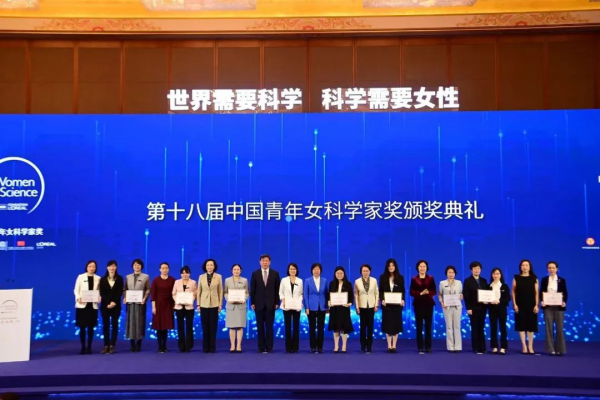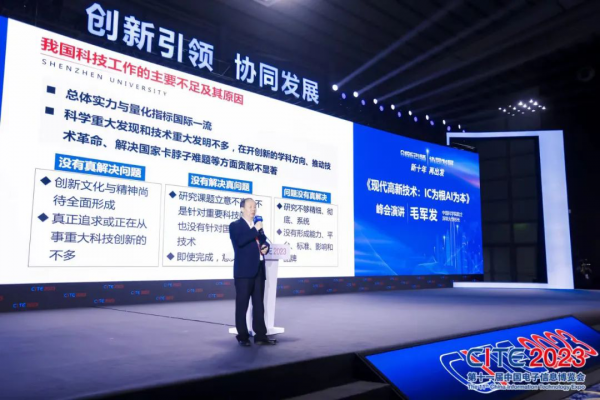Chip发表南京大学潘力佳和常州大学李晟团队综述论文:先进突触器件及其在仿生感知神经系统中的应用
FUTURE远见| 2023-03-15
Future|远见
Future|远见future选编
 Chip第2卷第1期(2023年春季刊)封面
Chip第2卷第1期(2023年春季刊)封面随着大数据、人工智能和5G等新兴信息技术的不断发展,仿生假肢、仿生机器人等设备的智能程度得以不断提高。为适应未来复杂的工作场景,进一步提高它们的智能化水平,必须实现对海量传感数据的及时高效处理。在这一传感数据爆炸式增长的背景下,基于冯·诺依曼架构的传统处理器模块将面临巨大的挑战。相较之下,生物的感觉器官通过感受器收集外界信息,并经神经网络将处理后的感知信号传递至大脑皮层形成环境感知。这种生物感知过程具备并行性、自适应、高容错和低能耗等诸多优势。
突触是神经元间相互连接的结构,在生物感知系统中扮演着重要的角色。可调节的突触权重是实现生物感知信号处理的基础。近年来,科学家们致力于开发基于拟态突触器件的仿生神经系统(图1)。目前多种电子器件已被用于构建人工突触,两端结构的忆阻器和多端结构的突触晶体管是两类最主要的突触器件。该综述对基于不同工作原理的忆阻器和突触晶体管进行了调研和总结。其中,忆阻器具备结构简单、访问速度快、能耗低和易于集成等优点,被广泛应用于神经形态计算领域中(图2)²。突触晶体管能够实现并行学习,更易于实现高级突触功能³。同时,电双层晶体管和电化学晶体管中的离子迁移过程与生物突触非常相似(图3)。这些优势使它们成为开发仿生感知系统的理想的数据处理节点。
 图1| 基于突触器件的仿生感知神经系统。
图1| 基于突触器件的仿生感知神经系统。 图2| 基于忆阻器的人工突触器件。
图2| 基于忆阻器的人工突触器件。 图3| 基于突触晶体管的人工突触器件。
图3| 基于突触晶体管的人工突触器件。基于突触器件的仿生感知神经系统结合了传感功能与突触行为,可以模拟了生物感觉的形成过程。它们可以在没有额外计算单元的情况下实现对感觉信号的原位传感、处理和存储。通过适当的材料选择、器件设计和集成,成功开发出了不同的仿生感觉系统⁴⁻⁵。该综述介绍了目前利用基于突触器件的仿生神经系统模拟生物感觉系统的发展现况,其中重点介绍了仿生触觉系统、仿生视觉系统及多模感知系统的代表性工作(图4)。
 图4| 基于突触器件的仿生触觉系统。
图4| 基于突触器件的仿生触觉系统。为促进相关研究工作的进一步发展,该综述最后分析了目前基于突触器件的仿生感觉神经系统的发展方向和现存的挑战。主要讨论了突触器件及仿生神经系统在生物融合与仿生机器人两个领域的发展前景,并讨论了仿生神经系统面临的信号匹配、多模态感知融合、高级神经功能模拟等领域挑战。
综上所述,基于突触器件的仿生感知神经系统具备低延迟、低能耗、生物兼容等优势,为仿生假肢、智能机器人等领域的发展提供了新的方向。目前相关的工作仍处在实验室初级阶段,实现进一步发展仍需生物、化学、材料科学、计算机科学等多学科领域的共同努力。
Advanced synaptic devices and their applications in biomimetic sensory neural system¹
With the development of big data, artificial intelligence, 5G and other emerging information technologies, the intelligence of bionic prostheses and humanoid robots has been continuously improved. To adapt to complex work scenarios in the future and to further improve the intelligence of biomimetic devices, it is necessary to achieve in-time and efficient processing of massive amounts of sensing data. Under the background of explosive growth of data, processors based on the traditional von Neumann architecture are facing huge challenges. In contrast, biological sensory organs collect external information through receptors, and transmit the processed signals to the sensory center in cerebral cortex through neural networks, forming environmental perception. This biological perception process has many advantages, such as parallelism, adaptability, high fault tolerance and low energy consumption.
Synapses are connections between neurons, which play an important role in the biological sensory system. Tunable synaptic weights are the basis of sensing signal processing of living beings. In recent years, scientists have devoted themselves to developing biomimetic neural systems based on synaptic devices (Fig. 1). A variety of electronic devices have been used as artificial synapses. Two main types are two-terminal memristors and three-terminal synaptic transistors. In this review, memristors and synaptic transistors based on different working mechanisms are investigated and summarized. Memristors stand out in terms of simple structure, fast accessing speed, low power consumption and easy integration, and have been widely used for neuromorphic computing (Fig. 2)². Synaptic transistors can perform concurrent learning and more easily realize advanced synaptic functions³. At the same time, the ion migration process in electric double-layer transistors and electrochemical transistors is very similar to that in biological synapses (Fig. 3). These advantages make them ideal data processing nodes for developing biomimetic sensory neural systems.
The biomimetic sensory neural system based on synaptic devices combines sensing functions and synaptic behaviors to simulate the formation of biological sensation. It realizes in situ sensing, processing, and storage of sensing data without additional computing units. Through proper material selection, structure design, and device integration strategies, different sensory systems have been successfully developed⁴⁻⁵. This review introduces the current development of biomimetic sensory neural systems, mainly focusing on the representative works of biomimetic tactile systems, visual systems, and multisensory integration neural systems (Fig. 4).
To promote the further development of related research, this review finally discusses the future direction and existing challenges of today’s synaptic devices and biomimetic sensory neural systems. The prospects in the fields of biological fusion and humanoid robots are mainly introduced. Existing challenges including signal matching, multisensory integration, and the realization of advanced neural functions are discussed.
In conclusion, the biomimetic sensory neural system based on synaptic devices has the advantages of low delay, low energy consumption, biocompatibility, and etc., providing a new direction for bionic prostheses, humanoid robots, and other fields. However, at present, the related works are still in the early stage, and future development requires joint efforts in fields such as biology, chemistry, material science, and computer science.
参考文献
1. Sun, Y. Q. et al. Advanced synaptic devices and their applications in biomimetic sensory neural system. Chip 2, 100031 (2023).
2. Zhou, F. et al. Optoelectronic resistive random access memory for neuromorphic vision sensors. Nat. Nanotechnol. 14, 776-782 (2019).
3. Park, H.-L. et al. Retina-inspired carbon nitride-based photonic synapses for selective detection of UV light. Adv. Mater. 32, 1906899 (2020).
4. Kim, Y. et al. A bioinspired flexible organic artificial afferent nerve. Science. 360, 998-1003 (2018).
5. Seo, S. et al. Artificial optic-neural synapse for colored and color-mixed pattern recognition. Nat. Commun. 9, 5106 (2018)
关于Chip
Chip是全球唯一聚焦芯片类研究的综合性国际期刊,已入选由中国科协、教育部、科技部、中科院等单位联合实施的「中国科技期刊卓越行动计划高起点新刊项目」,为科技部鼓励发表「三类高质量论文」期刊之一。
Chip期刊由上海交通大学与Elsevier集团合作出版,并与多家国内外知名学术组织展开合作,为学术会议提供高质量交流平台。
Chip秉承创刊理念: All About Chip,聚焦芯片,兼容并包,旨在发表与芯片相关的各科研领域尖端突破性成果,助力未来芯片科技发展。迄今为止,Chip已在其编委会汇集了来自14个国家的70名世界知名专家学者,其中包括多名中外院士及IEEE、ACM、Optica等知名国际学会终身会士(Fellow)。
Chip第二卷第一期(2023年春季刊)于2023年03月在爱思唯尔Chip官网以金色开放获取形式(Gold Open Access)发布,欢迎访问阅读文章。
爱思唯尔Chip官网:
https://www.journals.elsevier.com/chip




